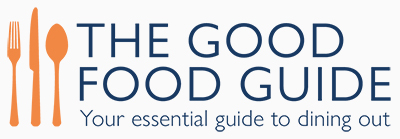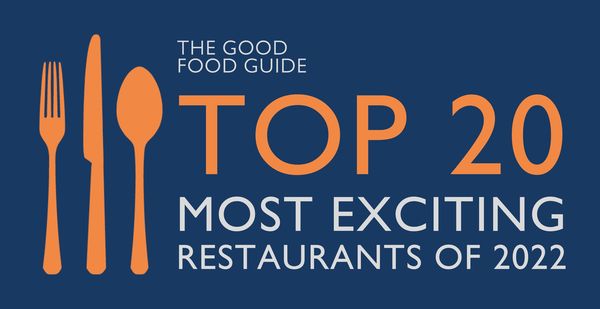What does it say, that in the company of a certain type of ruddy-faced, round-bellied gourmand of the old school, I would sooner admit to taste for ortolan, whale sashimi, and shark fin soup, than reveal my shameful secret: I like healthy food.
In foodie circles, it’s a badge of honour to overdo it. Watch us order the fattiest cuts, the butteriest mash, the richest sauces! We live in the shadow of the great epicureans like the New Yorker’s AJ Liebling whose idea of lunch for two involved daube Provençale, guinea hens, a bottle of Pétrus, another of Cheval Blanc and three of Krug; and former Vogue columnist Jeffrey Steingarten who once ate choucroute garnie ten times in half as many days (the title of his collection of essays was literally The Man Who Ate Everything). To eat too much, to drink too much, is a sign you belong in such exalted company. To show restraint, to cut back, to diet, indicates you’re a lightweight, a prig, a fake – worse – a wellness influencer. ‘Restraint is for others’ wrote Jay Rayner in a recent review in The Financial Times.
'To show restraint, to cut back, to diet, indicates you’re a lightweight.'
But years of eating out for a living take their toll. This isn’t something my restaurant reviewer and food writer colleagues and I are encouraged to talk about outside our own well-fed circle. We might talk about our diets and expanding waistlines – I have colleagues who go in for intermittent fasting, paleo, Zoe, Noom, Atkins, Ozempic, you name it – but nobody wants to talk about their gout, diabetes, heartburn, IBS, insomnia and more. Whenever I talk to outsiders about cutting back, I see the look of disappointment on their faces. They want to hear tales of Herculean eating; of the time I had two tasting menus in 45 minutes, and the time I ate fourteen croissants in a single day in Paris. They don’t want to hear I feel bilious.
It took The New York Times’ reviewer Pete Wells to get the subject out in the open. When he hung up his elasticated waist critic’s pants after 12 years in the job, he confessed that his cholesterol, blood sugar, and hypertension were through the roof. He went on to say, in the company of his peers, the one subject they almost never bring up is health. ‘We avoid mentioning weight the way actors avoid saying “Macbeth”’. That got others talking. On the Vittles Quarterly podcast soon after Wells’ resignation, Vittles founder Jonathan Nunn, expressed himself both surprised and moved by Wells’ confession. ‘It came as a surprise to me, even though it’s something I think is common with every restaurant writer, no matter if they’re a critic or not, that the job kind of takes over your body. [...]. That is something I think I have been struggling with more and more. My body is not my own. There are not many jobs where you can say that about your internal body.’
In the last few years, I’ve started eating to eat more healthily. I’m not doing anything particularly faddy or restrictive; I’m just lowering my booze, pie and pudding intake, and upping the fruit, veg, whole grains, nut and seed intake. (See, I have picked up some useful information from all the food magazines I’ve contributed to over the years). I feel better for it and, after years of getting ‘the call’ from my GP after a cholesterol check (‘No, not the good kind’), my doctor is happy. If the new regimen means skipping the odd sticky toffee pudding or smashburger? After two decades of doing this job, I think I’ll cope.
'Excess and overindulgence leads to a flattening of the dining experience.'
The only challenge is getting in my ‘five-a-day’, my ‘thirty plants a week’ in restaurants. It sometimes feels like modern restaurants are militating against the new, marginally healthier me. It’s not that usual to find vegetables, fruits, and salads outside of the side order section served without the liberal application of butter, cream, cheese, or pork fat. It’s rare to see plants in their natural state. Anecdotally, I hear from restaurateurs that they can’t get chefs to put a salad on. Fine-dining restaurants are some of the worst offenders. I’ve eaten 10-course tasting menus and come away not knowing if I’ve eaten well or badly, eaten a lot or a little. I just know I feel queasy and yet somehow still hungry. To generalise wildly, Asian restaurants are my safe places; places I’ll find meals that are designed to be balanced, where the raw, the crunchy, the light, the subtle are part of the experience; and it’s a mandarin or a slice of melon makes for a delightful dessert. For me, that dominance of competitive eating, of excess and overindulgence leads to a flattening of the dining experience. It gets boring.
I’m not being puritanical; this is still about pleasure. I’m a good eater – ask my mum – I’d just rather be eating soupy beans, steamed clams, braised greens, a spelt salad, or summer peaches and tomatoes than foie gras, confit duck, and fried chicken. I’m pretty sure I’m not alone. It’s often older customers, struggling with weight gain, insomnia, acid reflux and the rest of it, who have the spending power (at least for the moment) who would benefit from more varied, balanced menus, smaller portions and lower sugar, fat and salt options. Foodies can be thin, fat, old, young, male, female; a broader definition of what it means to be a foodie would be better for everyone.










